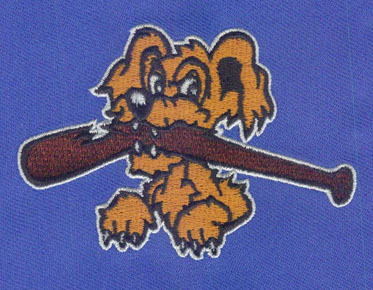The Ultimate Guide to Embroidery Stitches on Digitizing Embroidery
Knowing the different stitches is important when it comes to embroidery. You may have heard of them but not sure what they are and how they work? Eagle Digitizing will help you learn more about these pins and give you a better understanding of the different types of pins. Read on to learn more. Hope this article answers any questions you may have. It is important to know that different fabrics require different embroidery stitches. When digitizing, the content of each structure should also be considered.
When it comes to designing, certain stitches work better with some fabrics than others. If sewing on elastic, using too much density can cause wrinkles, which is not advisable. Likewise, if you're sewing on jeans, you probably don't want to use thick thread. That's because the digital design was done with stretchy knit fabrics in mind.
No matter which embroidery stitch you choose, choosing the right stitch can affect the final look of your design. Longer stitches are great for transitioning between two colors, while shorter stitches are great for blending. Also, long stitches work well when you are mixing multiple designs together. Finally, short and long stitches are the best for mixing designs. Those flowers that work best for floral embroidery will have different nuances around the stem and petals.
When designing seams, density needs to be considered. This is the distance between individual pins. A lower density of stitches means you have to work faster, reducing the chance of thread breakage and broken needles. However, too high a density can result in a stiff design that cannot be stretched. Depending on the density and fabric type, you may need to adjust the stitching density.
When sewing with embroidery, it's important to know the basic stitches. While there are many different types of stitches, the most common are satin, flow and fill. There are also different types of underlayment stitches. The bottom layer will provide a smooth surface for your stitches. The density of the design will make the design stand out. In addition to an underlay, an underlay is also required.
Depending on the design and your desired density, you can use a variety of stitches to create embroidery designs. Usually, the density is determined by the type of stitching. If you are embroidering digitized photos, you should keep the image as simple as possible. The simplified color palette will make it easier to identify the different stitched areas on the image. During digitization, the most suitable suture for the material should be selected.
When you design with embroidery, you should choose the correct type of stitching for the design. You need to consider the type of fabric you use for your design. It should be able to withstand the amount of thread used for the design. It is very important to choose the right thread type for your project, as the right thread will make the design look more realistic.
The type of fabric used for embroidery will determine the type of stitching you use.
Several types of sutures are used for the same project. If you are digitizing your logo, you should set the size and orientation of your design before digitizing. You should also choose the right color for the thread and fabric. When you digitize your logo, you should consider the weight of the fabric and the "push and pull" of the design
To create interesting designs, you need to
know how to transfer designs onto fabric. Most projects use templates. The
easiest way to transfer a pattern to fabric is to trace the pattern with a
pencil. Once the pattern is traced, the fabric needs to be placed on the
template. Make sure the fabric has enough room to move. You can then choose to
sew the design using needle and thread.


